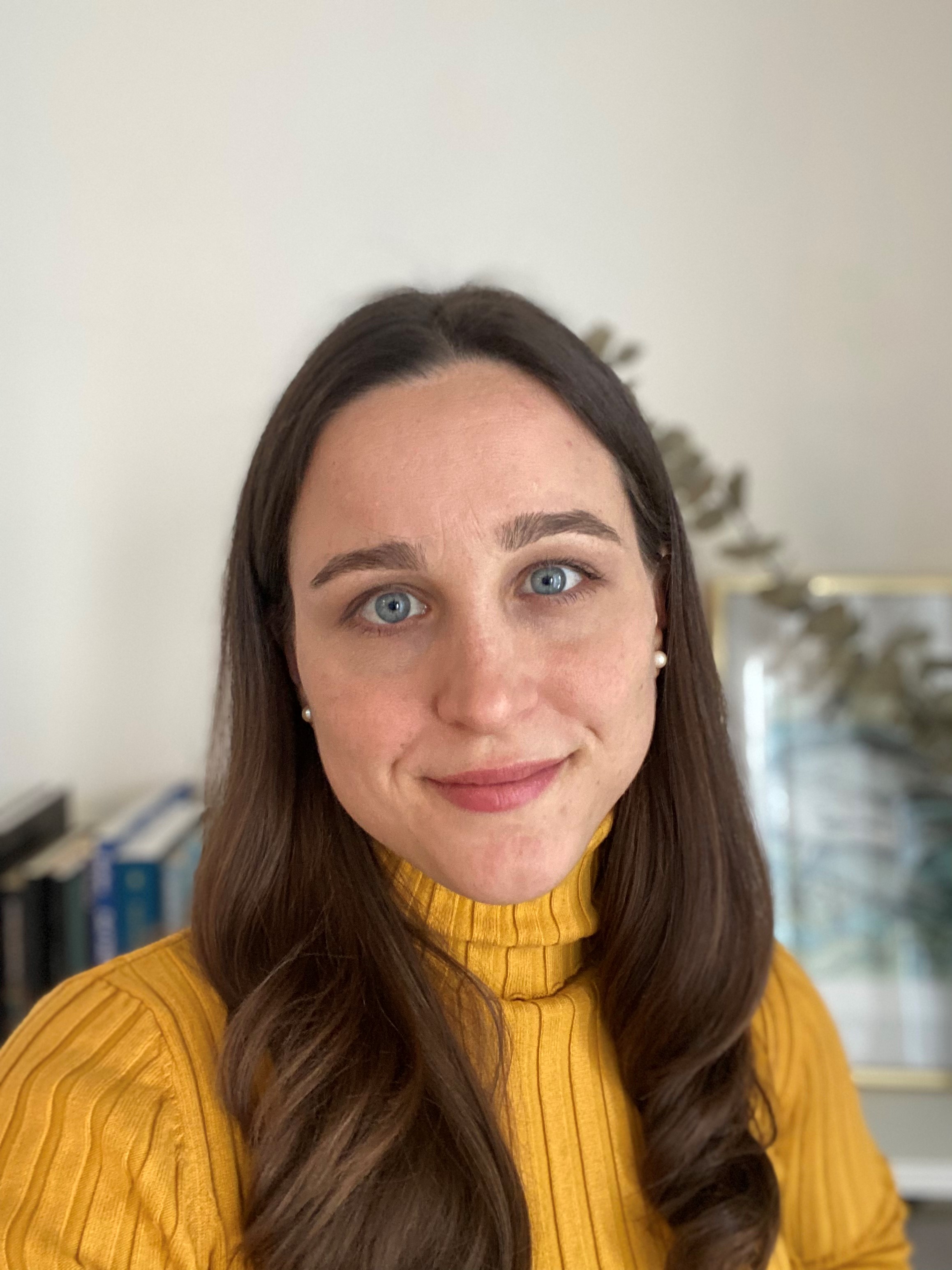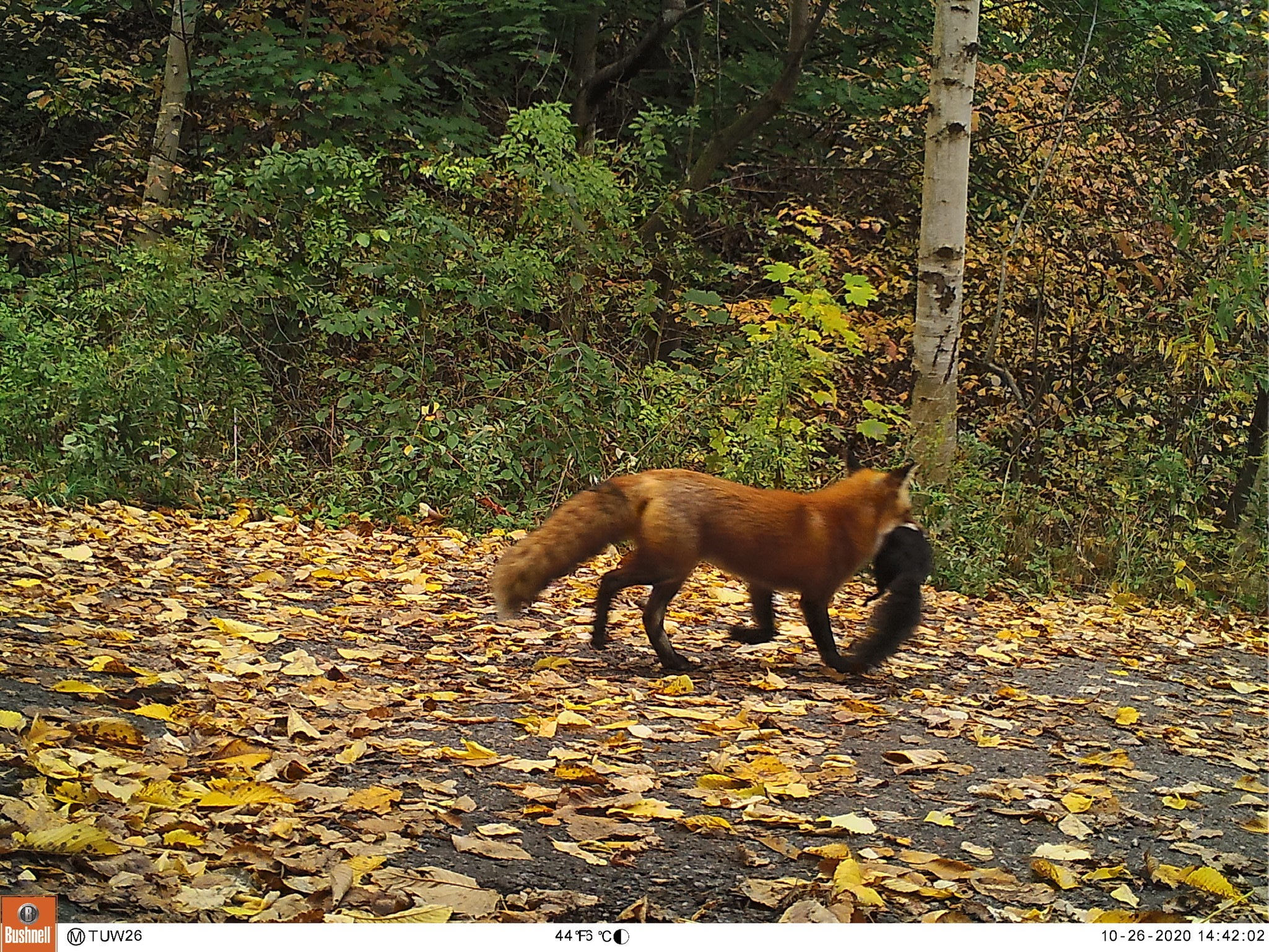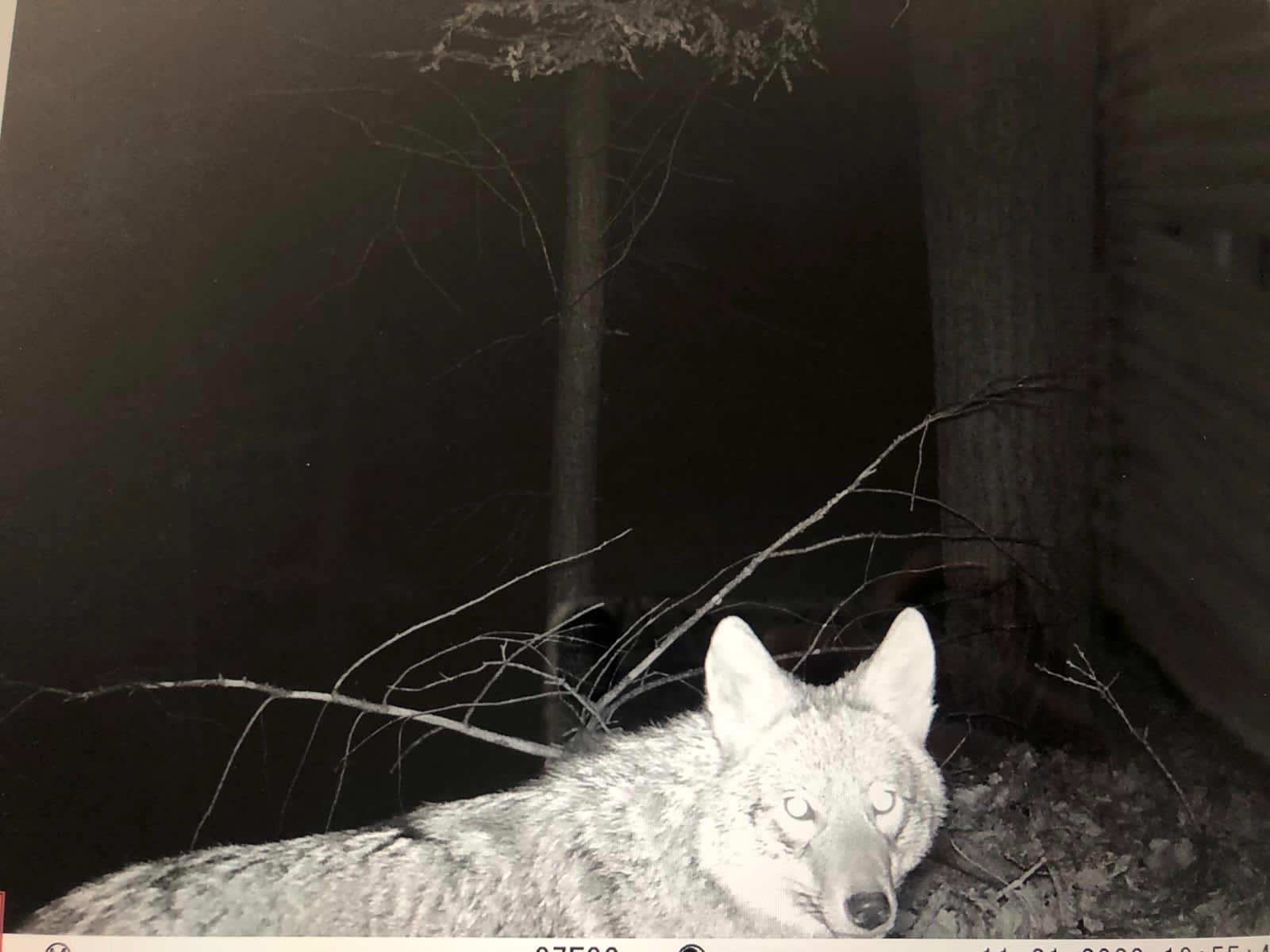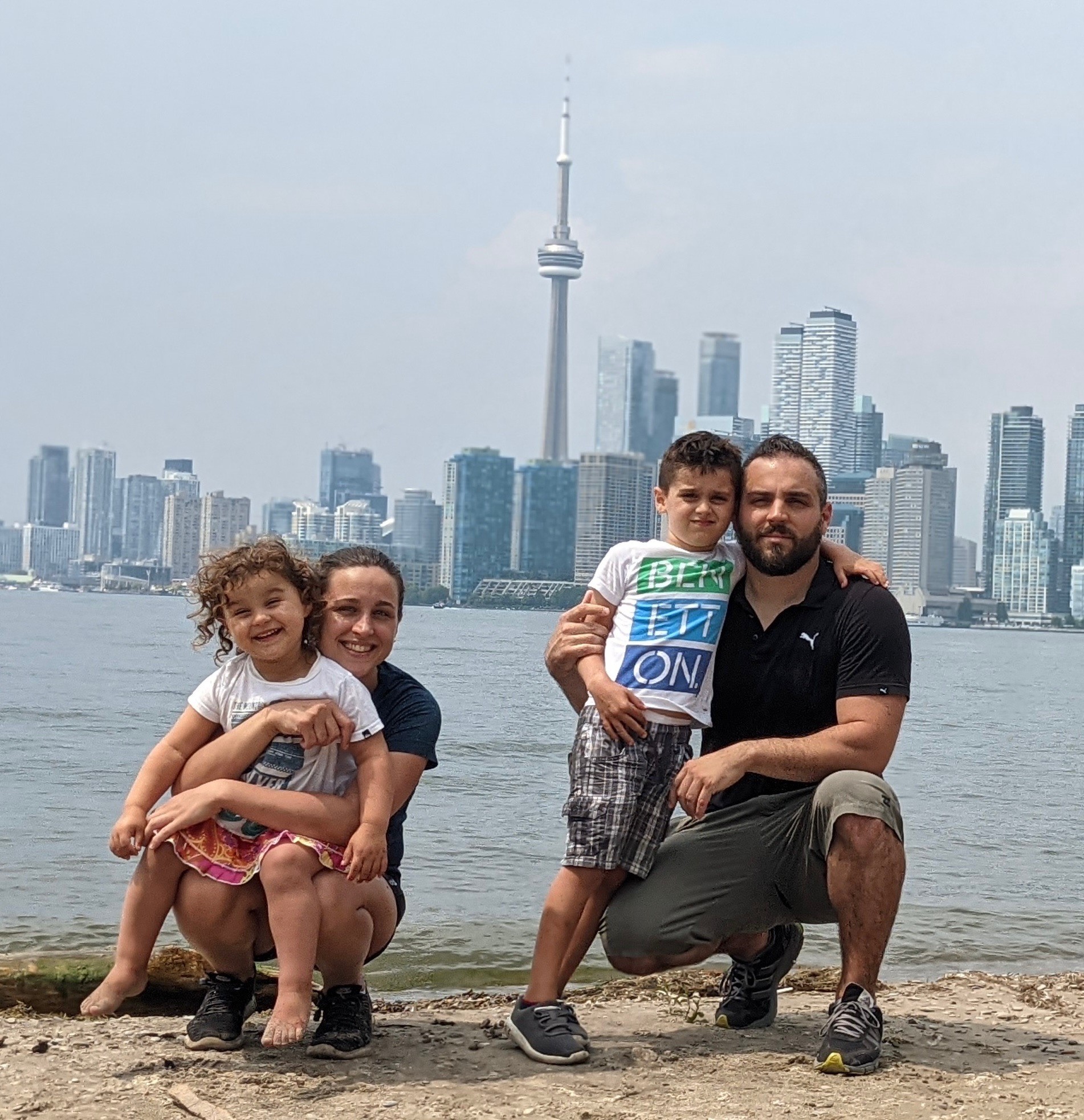“Been in America”: Interviews with German researchers in the USA and Canada

Dr. Tiziana Gelmi Candusso
(02/25/22) Through its research fellowship program and through the Walter Benjamin Program, the DFG supports early career researchers in their academic careers by funding an independent research project abroad (and since 2019 in Germany, too). A large proportion of these fellowships are awarded for research in the USA and (to a lesser extent) in Canada, reflecting the belief still prevalent in many disciplines – and in the life sciences in particular – that for a career in research it is helpful to have “been in America”. In this series of talks, we aim to give you an impression of the range of DFG funding recipients. Let’s take a look at who is behind funding number GE 3103.
DFG: Dr. Gelmi Candusso, thank you for taking the time for an interview. Is this a typical day for your research project in Toronto and if so, what does your typical day look like?
Tiziana Gelmi Candusso (TGC): Thank you very much for your interest in my story and thank you for doing this interview in English, because it has been a while since I´ve used my German skills – this definitely puts me more at ease. What is my routine on a typical day like today? First, I have to make sure I get my two kids up, dressed, fed, and off to daycare. The morning rush is usually over by 9 am. Then I start my workday, which is mainly sitting at the computer programming all day (either for statistical analyses or modelling the animal’s behavior in the city), managing the data that I have for the project, or moving the papers I am writing forward. There is so much going on behind this screen that I barely see the sunlight most days before it is time to pick up the kids again and deal with the evening routine.
DFG: Spanish and Italian were your first languages, and your first name points in the direction of a Renaissance painter from Venice. That sounds like quite an interesting family history.
TGC: You are right, although I was actually named after my mother´s late school friend, with the hope of me being as kind she was. I was born in Lima, Peru into an Italian family. My grandparents migrated after the war from Bergamo and Lecco in Italy to Peru, so I grew up speaking both Italian and Spanish. We almost moved back to Italy during my childhood, but Peru wasn´t a bad place to grow up once the internal guerrilla war ceased, so my parents decided to stay. I ended up moving to Italy when I was 18 to study in one of the oldest universities in Italy, at Padova, where I met my husband. We then moved to Trieste for our Master’s program, and to Germany for our Master’s thesis with the Erasmus program. We stayed in Germany for 8 years, where my two kids were born and where we completed our doctorate degrees and picked up the German language. I have to admit, though, that the academic bubble coddled me with an English-speaking environment, so you really had to try hard to fully immerse yourself in the local language.
DFG: We are conducting this interview in English and English seems to have become the lingua franca of a modern Europe. You have built a rather pan-European educational biography and took part in the Erasmus program. Are you part of an “Erasmus generation” and if so, how would you describe it?
TGC: For sure -- we did the doctorate with people from all over Europe and the world. Research in Germany is extremely international. I never would have discovered the amazing research going on in Germany if I hadn't been awarded the Erasmus opportunity.
DFG: Before we start talking about your time in Germany, let’s rewind a little and talk about your interest in biology. When and how did that start and did your siblings go down the biology path as well?
TGC: I went to a really good school in Peru, Newton College. Part of their curriculum was going to their field station in the tropical rainforest, as early as 12 years old, to do little research projects on the local fauna and flora. We had to think up sampling designs and put them into practice. We went on night walks in the middle of the rainforest, which was quite scary, but it definitely impacted how I saw science – it wasn´t just in books. Having the opportunity to be hands-on with different projects definitely connected me to the natural world. For the International Baccalaureate I focused in biology, geography, and chemistry, and wrote my final project about the spatial distribution of frogs. I recorded them myself in environmentally diverse locations around the field station, and examined the species diversity recognizing frog species based on their callings by comparing them to a casette with all the species-specific callings frogs have. It was really fun – how can one not get hooked on the natural sciences after that? My main influences were definitely the passion and patience of my science teachers at school, from my very first science teacher to my high school teachers, Mr. Ash and Mr. Bruggers. Our school is probably the reason why my brothers went into engineering too, so that shows the importance of a good early education system.
DFG: Your Master’s thesis was at the University of Trieste and the GEOMAR, about the “Effects of Climate Change on Algae and Benthic Invertebrates.” Why this focus and what were the results?
TGC: Yes, it was a great experience up by the Baltic sea with Prof. Martin Wahl at the marine ecology lab, working with mesocosms. I was interested in the spatially diverse effects of climate change -- how organisms may react differently to climate change based on where their population is located and the local environmental conditions. To study this, I fished for live organisms from two distinct populations (one in the North Sea and one in the Baltic Sea) and tested their reaction to changed climactic conditions in microcosms. We chose an algae, Fucus vesiculosus, and starfish, Asterias rubens, which are quite abundant both in the Baltic and the North sea. We compared these two environments because one has recurrent anoxic conditions and more drastic temperature changes, while the other is less harsh. We tested how the algae changed their photosynthetic productivity and how long the seastars survived in anoxic periods. The Baltic organisms did much better than those in the North Sea, probably since they were more accustomed to the harsh conditions. Seastars are quite sneaky as study animals though, I have to admit – they kept breathing through the surface of the water even when I turned the water fully anoxic, so I had to outsmart them with a net. So I had to outsmart seastars for my master’s thesis. After that, there is nothing you can´t accomplish.
DFG: You joined the group of Marie-Josée Fortin at the University of Toronto. Could it have been another group somewhere else and if not, why?
TGC: Not at all, I would have never chosen another host for my DFG project other than Prof. Fortin. She wrote one of the papers I cited repeatedly during my PhD and when I learned she was studying spatial ecology from so many different perspectives, I knew I wanted to work with her. Her group is one of the best in the world when it comes to spatial ecology, species-habitat relationship, and spatial and landscape modeling, I have learned about ecological modeling far beyond my expectations. It has also given me the opportunity to explore and get comfortable in different programming languages and be part of the University of Toronto, which is a top university in Canada. Also, you´d be amazed, but Toronto is extremely rich in urban wildlife, so it was one of the best cities in which to develop my DFG project.

Red Fox with Prey
© Privat
DFG: That’s true – Toronto does not come immediately to mind when you think about wildlife. You came to Toronto in November of 2019, about three month before Covid-19 shut down the city, at least from the perspective of human activities. Was that an advantage in the sense that you could more easily observe wildlife?
TGC: The shut-downs initially pushed people indoors, which brought animals into the city at times when they normally wouldn’t have been there. Daylight sightings of foxes and coyotes became frequent. As the pandemic evolved, however, businesses remained shut down but people were encouraged to go for walks and get out into nature, pushing them into urban green areas in larger numbers, which made it harder to observe the animals with our sampling methods. One of the datasets we are collecting is images of wildlife in parks and urban forests. These cameras collected many more photos of humans than they would have done otherwise, so our storage requirements and data processing increased. Luckily, we got to collaborate with Dan Morris and the machine learning code generated by Sara Beery, both formerly at AI for Earth, which allowed for a faster classification of the vast amount of photos we collected during this time. But Covid also delayed our sampling expeditions for wild canid scats and the laboratory analyses of these, so it definitely affected the project on many different levels. Nonetheless, this pushed us to search other sources of data, and thanks to the amazing collaborative spirit between universities and governmental insitutions, I have been able to use tracking data of wild canines in the city of Toronto that had previously been sampled by Prof. Brent Patterson´s research group at the Ministry of Natural Resources and Forestry.
DFG: Collection of data in your field sounds like a good project for including citizen scientists. You have quite an active Twitter Account. Do you interact with the public? What is your motivation to engage in research communication about landscape ecology?
TGC: As part of the project we have a series of camera traps in the city, so having an active Twitter account is part of engaging with the public and diminishing fear and rejection of the camera traps. Even though we have lost a fair share of cameras to theft, most people I encounter are very interested in urban wildlife, and they definitely appreciate knowing what´s going on in their backyards when they are sleeping. Twitter is also an essential tool in the scientific landscape: it is great to communicate between researchers, learn from each other, and establish collaborations. I definitely encourage scientists to be a part of it -- it keeps you up to date with the literature at least.
DFG: Back in Göttingen, you participated in a scientific writing workshop. What needs to be learned about communicating research to the public or to write papers for publication?
TGC: It is all about the story you tell: being able to write and communicate the story you are unraveling through your research is an essential part of being a scientist. We are scientists in order to expand knowledge and if we cannot communicate the new knowledge we are discovering, the work remains incomplete.
DFG: How is the atmosphere of a research group in the US different from a group in Germany, let’s say at the German Primate Center? Is your group in Canada more collaborative?
TGC: In Germany, I was part of a collaboration between Prof. Katrin Heer at the University of Marburg and Prof. Eckhard Heymann at the German primate center, so my doctorate was the result of a collaboration between a behavioural ecologist and a plant geneticist, which is how I got to learn from both fields. There is ample collaboration going on in Germany, and plenty of fruitful research coming out of that. I see much more openness in the spirit for collaboration here, however. If you discuss a common interest with another researcher, very frquently a collaboration is born. The levels of collaborative spirit I see here in Canada and in the United States (which I get to see through our partnership in the Urban Wildlife Network Initiative) is definitely hard to match. There is a “let´s build it together” and “let´s write it together” spirit that is key in the pace of research happening on this side of the world.

Coyote Caught in Photo Trap
© Privat
DFG: Your research proposal describes a landscape within Toronto that can be easily missed by the untrained eye of a regular tourist. Could you expand a little on the habitat of coyotes and red foxes within Toronto’s city limits?
TGC: When tourists come to the city they go downtown, see the CN tower, the Aquarium, the tall buildings, and the lakeshore, but many miss a key feature. Behind those high-rise buildings there is a network of urban forests along the rivers, i.e. a ravine system, traveling through the city. This network of densely forested habitat, together with golf courses, large parks, and green areas along railways, serve as wildlife reservoirs and movement corridors. So even if at first sight Toronto is a densely-populated metropolis, it has plenty of green heterogeneous surface area and water bodies to maintain an abundant and diverse wildlife community, which is key to maintaining a healthy population of predators such as foxes and coyotes.
DFG: What is the goal of your current research project and what are the fields of “broader impact” within your research? How will it contribute to making the world a better place?
TGC: The goal of my DFG project is to assess the contribution of wild canines, i.e. foxes and coyotes, to seed dispersal in the city. Which plant species are they moving, and how far are they going? Are they creating gene flow for urban forests across the habitat fragmentation of the city, or are they allowing the expansion of invasive species? How can we fix this if they are? However, since part of the project involves the collection of scats (animal droppings), we have partnered up with Prof. Peter Molnar´s lab at U of T and expanded into the study of human-borne disease transmission. So what started as a specific analysis of the ecological contribution of these animals has expanded into a multidimensional analysis of their presence in the city engaging many students at U of T through internships and volunteering. Seeing this project grow and feed into the interest of so many students for urban wildlife has definitely already made my world a bit better. As a whole, will it make the world a better place? It will -- by increasing e knowledge about the function of these wild animals, how they live in the city and how they are making the natural world of the city function. It will transform the fear perspective into understanding and respect, improving human-wildlife coexistence.
DFG: You are analyzing the content of fox and coyote scat in Toronto. What are the biggest surprises so far?
TGC: Because of the delays from Covid, we are starting the analysis on scat content this year, so hopefully some of those 300 scats collected will bring some surprises.
DFG: Do you involve family and colleagues in collecting data for your research?
TGC: Yes, definitely my family. More than involve I would call it dragging them with me over the weekend when it´s time to sample or collect data cards from camera traps. It´s a good excuse to get out into the wild and enjoy some time together.
DFG: Your research touches on the conflict of human activities and wild life. Is there an ethical guideline you follow when sorting out this conflict?
TGC: My research touches briefly on the subject and indirectly, really, there are lots of organizations in the city that take care of that. My research focuses more on how the urban space is shared with wildlife in the city and how wildlife navigates around human activities both spatially and temporally. But the best advice to maintain a peaceful coexistence with wildlife is to remain neutral: avoid interacting with them, and they will naturally avoid you.
DFG: How about your personal guidelines concerning research ethics?
TGC: My personal guideline is always to follow the pre-established rules when working with animals. Luckily there are species-specific rules, previously written by ethics committees. There are also permits to obtain before working with animals, so even if it can be a lengthy process, it is a blessing both for the animals and researchers to follow through.

Tiziana Gelmi Candusso with Family
© Privat
DFG: What are your plans for the next five to ten years?
TGC: My plan is to keep working with urban wildlife -- there is still so much to unravel. The field of research is of course very competitive and I know that I am competing in a field with people who are able to work 24/7. Luckily, kids grow fast, and currently thanks to the DFG and their family-friendly funding policies I can manage my career while raising two children, so I am hopeful that in the future there will be many more projects to come, and many more students to mentor.
DFG: Besides science, do you have particular areas of interest, like music or art?
TGC: I don’t have a lot of spare time, but when I do have time on my own, I enjoy the silence by reading, baking or going swimming or ice-skating.
DFG: What are your favorite memories and places so far in Canada? What should one not miss when visiting Toronto?
TGC: Toronto is one of the most exciting cities I have ever been to in terms of cultural diversity. Which means that you can find restaurants or shops from anywhere in the world. As a multi-cultural person, I find that very comforting. You can travel to anywhere in the world without leaving the city, which comes in especially handy when you get nostalgic. For example I can find bakeries where I immediately feel like I’m in Italy, shop at stores where I can find all of my childhood Peruvian treats, and eat at bistros where I can have a good glass of Belgian or German beer. In a matter of minutes you can feel like you are not even in a city by going to the ravines or taking the 15 minute ferry to the islands. Not to be missed are definitely the Royal Ontario Museum, spending time at the lakeshore, or visiting one of the many local parks with their ice-skating rinks and swimming pools, depending on the season.
DFG: Final question: What makes you laugh?
TGC: Lots of things, but in particular the randomness of having small kids around -- they are hard work but definitely bring joy. Also, working with undergrad students comes with its fair share of laughter, especially when we are trying to identify photos from the camera traps together. Once we identified a garbage bag as a skunk, only to realize it had been a garbage bag all along.
DFG: Let’s hope then that your two children continue to generate delight and that you will be able to combine family with a successful research career. Thank you very much for your time and the insight into wildlife in dense urban environments. We wish you all the best for the future.